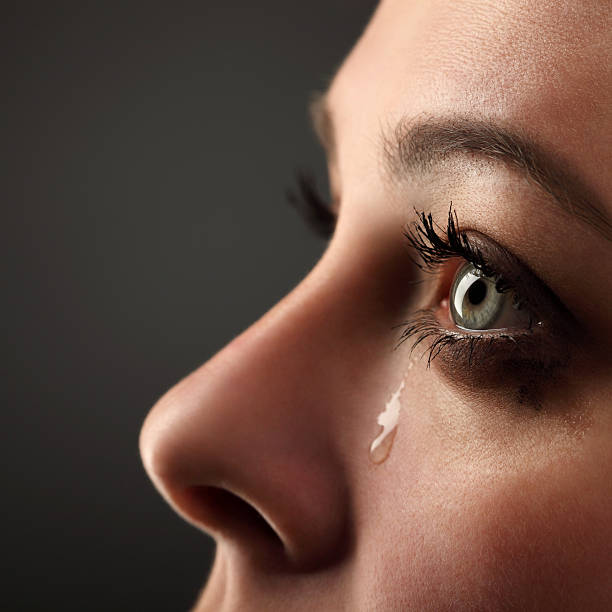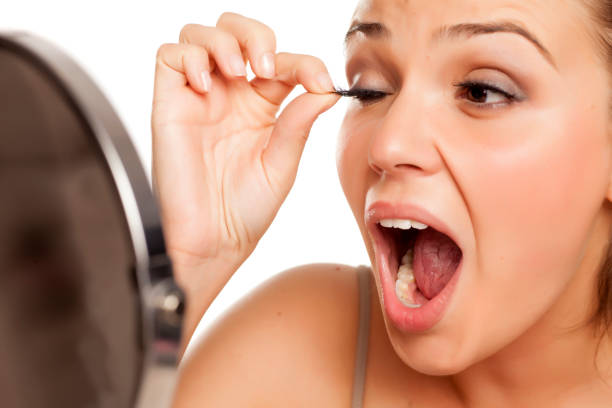Have you ever wondered: does crying make your eyelashes longer? It’s a curious thought, isn’t it? While it may sound like a unique way to enhance your lashes, the relationship between crying and eyelash length isn’t quite as straightforward as it seems. In this exploration, we’ll dive into the fascinating world of eyelashes and the impact, if any, that crying might have on their growth. So, if you’ve ever pondered whether your tears could be the secret to longer lashes, let’s find out together!
The Science Behind Eyelash Growth
In order to determine whether or not crying can make your eyelashes longer, we need to understand how eyelash growth works. Eyelashes, like all hair on the body, go through a growth cycle that includes three phases: anagen, catagen, and telogen.
During the anagen phase, which lasts between 30 and 45 days, the hair follicle is actively growing. The catagen phase, which lasts between two and three weeks, is a transitional phase where the hair stops growing. Finally, during the telogen phase, which lasts between four and nine weeks, the hair falls out, and the cycle starts again.
The length and thickness of your eyelashes depend on the duration of the anagen phase. Unfortunately, the anagen phase is predetermined by genetics and cannot be changed.
The Myth of Crying and Eyelash Growth
So, does crying make your eyelashes longer? Some people believe that the tears produced when crying contain nutrients that promote hair growth and that these nutrients can make your eyelashes longer. However, there is no scientific evidence to support this claim.
“Crying does not make the eyelashes grow but the eyelashes may appear darker or straighter as tears lubricate the lashes.” – According to Dr. Dendy Engelman, a board-certified dermatologist in New York City. In fact, tears are made up of water, salt, and other compounds that have no proven effect on hair growth. While crying might make your eyes appear more hydrated and refreshed, it won’t make your eyelashes grow longer.
benefits of crying
Emotional Release: Crying can be a healthy way to release and express your emotions. It allows you to process and cope with feelings of sadness, frustration, anger, or stress.
Stress Reduction: A study published in the journal “Psychoneuroendocrinology” found that crying can help to reduce stress hormones, such as cortisol. In fact, shedding tears triggers the release of endorphins, the body’s natural feel-good hormones.
Pain Relief: Tears contain natural painkillers, such as leucine enkephalin and prolactin. Crying may provide some pain relief by reducing physical discomfort associated with emotional distress or even physical injuries.
Cleansing and Hydration: Tears help keep your eyes moist and free from irritants. They contain proteins and antimicrobial properties that protect the eyes from infections and irritations, acting as a natural cleansing mechanism.
Improved Mood: After a good cry, many people report feeling emotionally lighter and experiencing a sense of catharsis. This can lead to improved mood and a greater sense of emotional well-being.
Social Connection: Crying can serve as a non-verbal signal to others that you’re in distress or need support. This can lead to increased social bonding and support from friends and loved ones.
How to Actually Grow Longer Eyelashes
If you’re looking for ways to grow longer eyelashes, there are a few things you can try that are backed by scientific research. Here are some tips:
Use an Eyelash Serum
Eyelash serums contain ingredients like biotin, peptides, and hyaluronic acid that can help to enhance the length and thickness of your lashes. Be sure to choose a serum that is specifically formulated for eyelashes and follow the instructions carefully.
Apply Castor Oil
Castor oil is rich in fatty acids that can nourish and moisturize your eyelashes, promoting healthy growth. To use castor oil, apply a small amount to a clean mascara wand or a cotton swab and brush it onto your lashes before bed.
Remove Your Makeup Before Bed
Sleeping in your makeup can cause your lashes to become brittle and break off. Be sure to remove all traces of mascara and eyeliner before bed to give your lashes a chance to breathe and grow.
Eat a Healthy Diet
A well-balanced diet that is rich in vitamins and minerals can promote healthy hair growth, including eyelashes. Be sure to eat plenty of fruits and vegetables, lean protein, and healthy fats.
FAQs
- Can I use false lashes to make my eyelashes appear longer? Yes, false lashes can be used to enhance the length and volume of your natural lashes. Just be sure to choose a style that complements your eye shape and applies them carefully to avoid damaging your natural lashes.
- Does trimming my lashes make them grow longer? No, trimming your lashes will not make them grow longer. In fact, cutting your lashes can cause them to become damaged and break off.
- Can stress cause my eyelashes to fall out? Yes, stress can contribute to hair loss, including eyelash loss. If you’re experiencing excessive eyelash shedding, it’s important to talk to your doctor to rule out any underlying medical conditions.
- Are eyelash extensions a safe way to enhance the length of my lashes? Eyelash extensions can be safe if applied correctly by a trained professional. However, they can also damage your natural lashes if not removed properly or if you pull them off yourself.
- How long does it take for eyelashes to grow back after falling out? It typically takes between six and eight weeks for eyelashes to grow back after falling out.
Final Takeaway
In the quest for longer, luscious eyelashes, it’s clear that crying alone won’t be your magic solution. While tears have their essential role in eye health and emotional expression, their ability to promote eyelash growth remains unproven. Instead, for those seeking longer lashes, there are plenty of eyelash serums, extensions, and mascara options available that offer more reliable results. Remember, a good cry may bring emotional relief, but if you’re dreaming of longer lashes, you’ll want to explore dedicated beauty products and routines to help you achieve that desired look.




